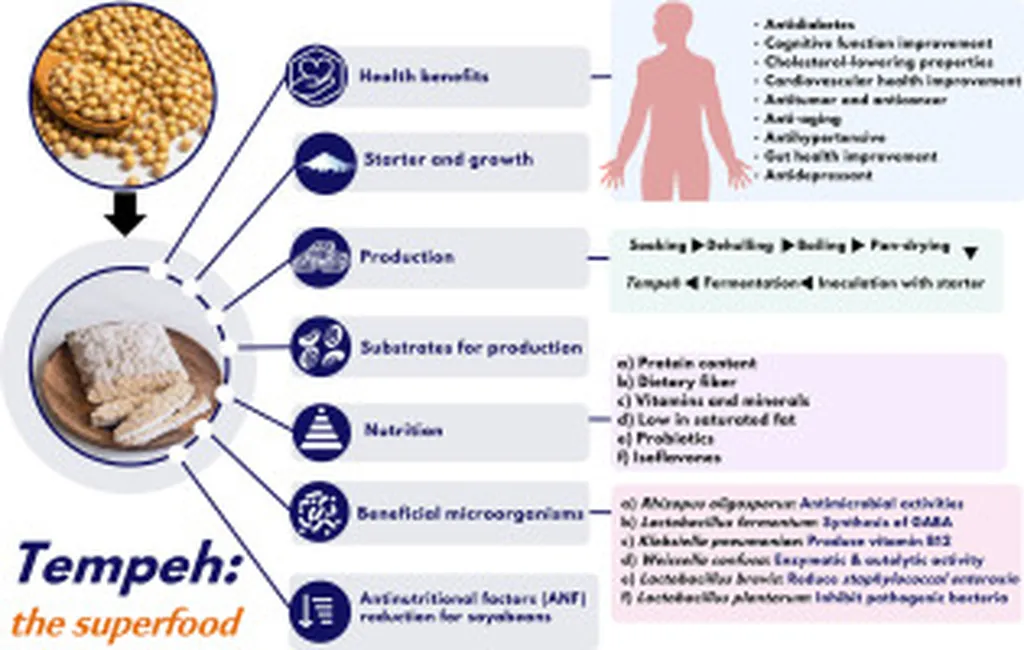In the quest to combat the global health crisis of cardiovascular disease, researchers have turned their attention to a humble yet powerful food source: tempe. A recent study published in *Frontiers in Nutrition* has revealed that tempe flour could be a game-changer in the fight against high cholesterol, offering significant potential as a functional food with hypocholesterolemic properties.
The study, led by Made Astawan from the Department of Food Science and Technology at IPB University in Bogor, Indonesia, compared the bioactive compounds in tempe flour and soybean flour, focusing on their ability to lower blood lipid levels. The results were striking. Tempe flour not only exhibited higher cholesterol-binding activity but also showed stronger anti-lipase activity compared to soybean flour. “The difference in activity was significant,” Astawan noted, highlighting that tempe flour had a 27.66% cholesterol-binding activity compared to 14.98% in soybean flour, and a 23.24% anti-lipase activity compared to 15.03%.
The research employed metabolomic profiling using GC-MS (Gas Chromatography-Mass Spectrometry) to identify the bioactive compounds responsible for these effects. Tempe flour was found to be rich in isoflavones, amino acids, organic acids, meglutol, and GABA. These compounds are believed to contribute to the hypolipidemic effect through various mechanisms, including inhibiting cholesterol synthesis, forming cholesterol esters, and increasing the excretion of cholesterol and bile acids.
The implications of this research are far-reaching, particularly for the agriculture sector. Tempe, a traditional Indonesian fermented soybean product, has long been a staple in many households. However, its potential as a functional food has only recently been recognized. The study suggests that tempe flour could be a valuable addition to the market, offering a natural and effective way to manage dyslipidemia.
“The findings open up new avenues for the agricultural industry to explore,” Astawan explained. “By focusing on tempe production and processing, farmers and food manufacturers can tap into the growing demand for functional foods that offer health benefits beyond basic nutrition.”
The study also paves the way for further research into the bioactive compounds in tempe and their mechanisms of action. Understanding these compounds could lead to the development of new food products and dietary interventions for managing cholesterol levels and preventing cardiovascular disease.
As the global population becomes increasingly health-conscious, the demand for functional foods is on the rise. Tempe flour, with its proven health benefits, could become a key player in this market. The research not only highlights the potential of tempe as a functional food but also underscores the importance of traditional foods in modern health and nutrition.
In the words of Astawan, “This study is just the beginning. There is so much more to explore in the world of functional foods, and tempe is a promising candidate for further research and commercialization.” The findings could shape future developments in the field, encouraging more investment in the production and processing of tempe and other fermented foods.

